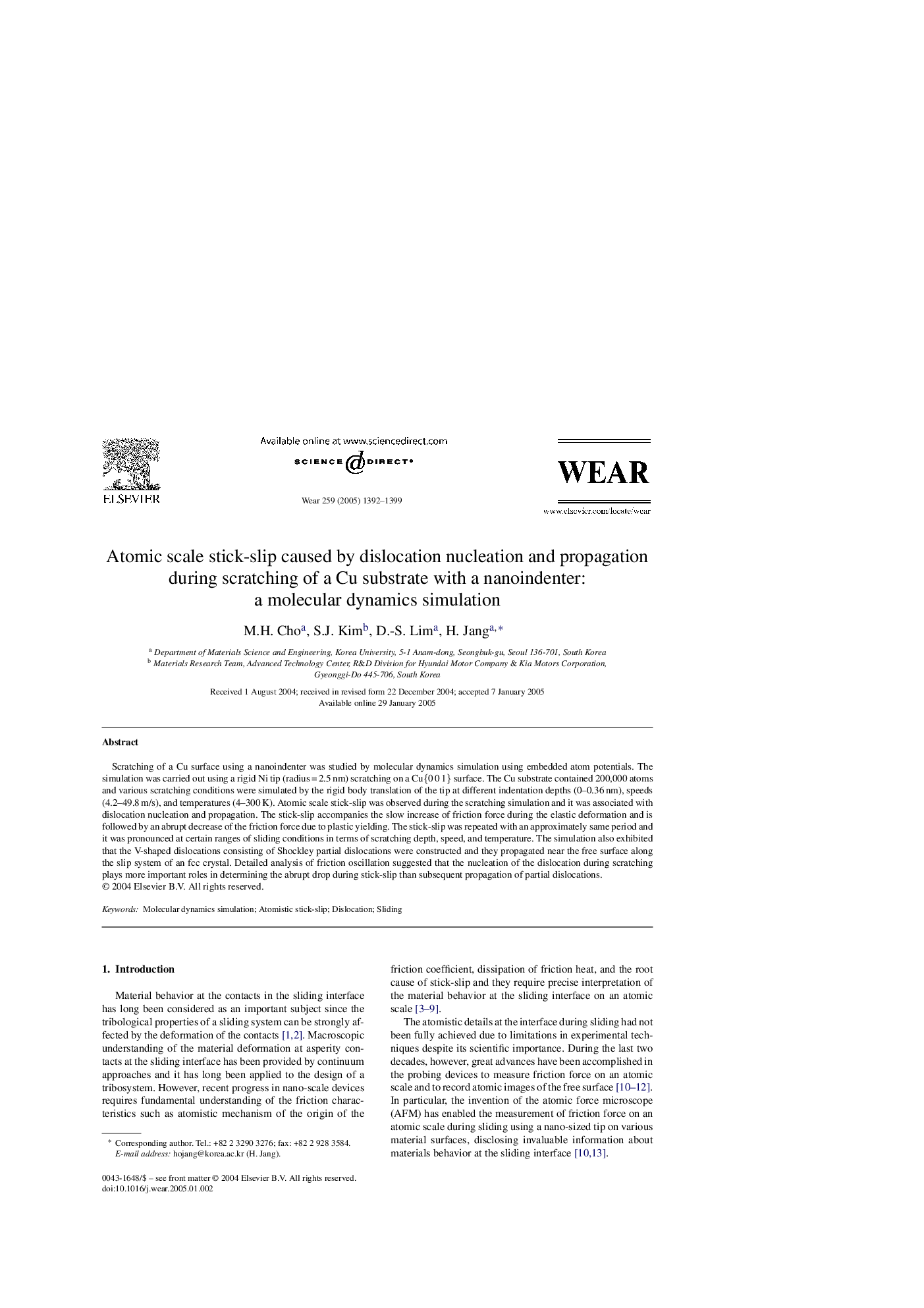| Article ID | Journal | Published Year | Pages | File Type |
|---|---|---|---|---|
| 9679365 | Wear | 2005 | 8 Pages |
Abstract
Scratching of a Cu surface using a nanoindenter was studied by molecular dynamics simulation using embedded atom potentials. The simulation was carried out using a rigid Ni tip (radius = 2.5 nm) scratching on a Cu{0 0 1} surface. The Cu substrate contained 200,000 atoms and various scratching conditions were simulated by the rigid body translation of the tip at different indentation depths (0-0.36 nm), speeds (4.2-49.8 m/s), and temperatures (4-300 K). Atomic scale stick-slip was observed during the scratching simulation and it was associated with dislocation nucleation and propagation. The stick-slip accompanies the slow increase of friction force during the elastic deformation and is followed by an abrupt decrease of the friction force due to plastic yielding. The stick-slip was repeated with an approximately same period and it was pronounced at certain ranges of sliding conditions in terms of scratching depth, speed, and temperature. The simulation also exhibited that the V-shaped dislocations consisting of Shockley partial dislocations were constructed and they propagated near the free surface along the slip system of an fcc crystal. Detailed analysis of friction oscillation suggested that the nucleation of the dislocation during scratching plays more important roles in determining the abrupt drop during stick-slip than subsequent propagation of partial dislocations.
Related Topics
Physical Sciences and Engineering
Chemical Engineering
Colloid and Surface Chemistry
Authors
M.H. Cho, S.J. Kim, D.-S. Lim, H. Jang,
